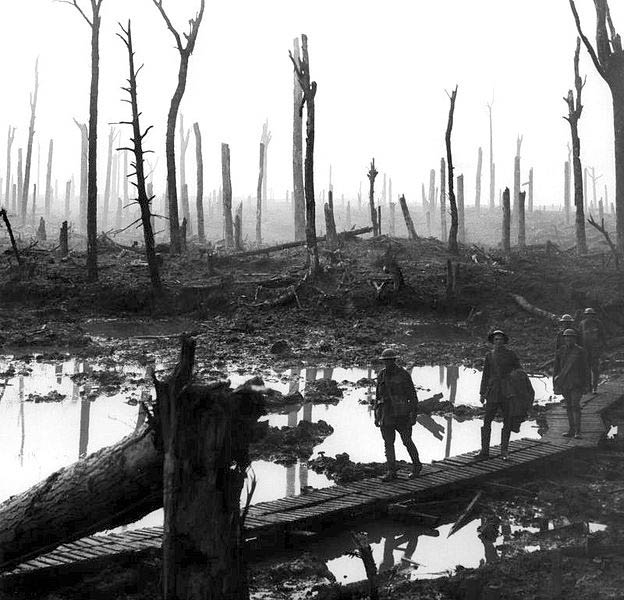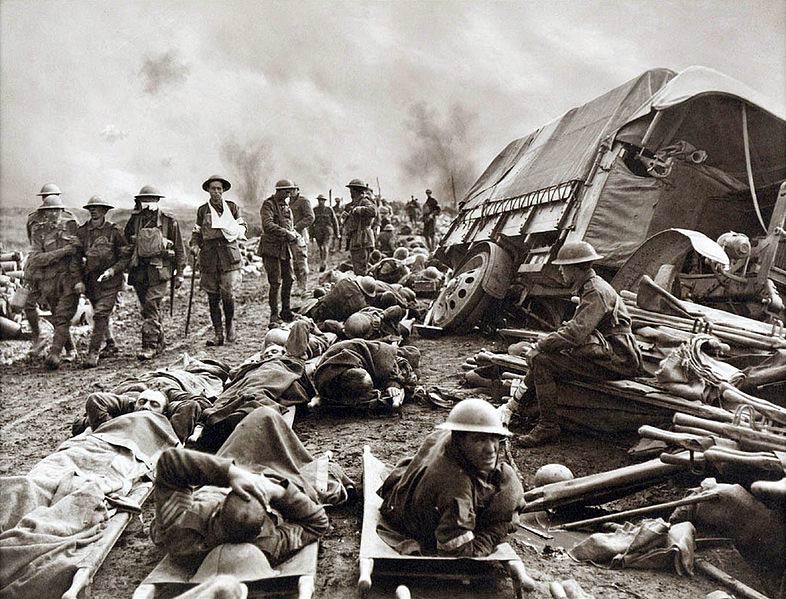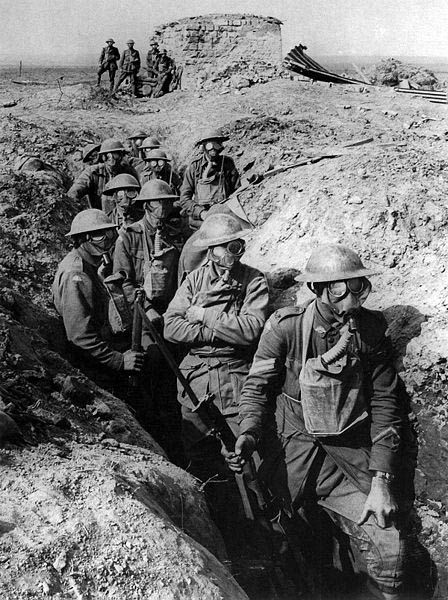| Battle of Passchendaele | |||||||
|---|---|---|---|---|---|---|---|
 |
|||||||
|
|||||||
| Contenders | |||||||
(Australia, Canada, India, Newfoundland, New Zealand, Union of South Africa, United Kingdom) |
|||||||
| Unit Strength | |||||||
| 50 British, 6 French divisions | 77–83 German divisions | ||||||
| Casualties and Deaths | |||||||
| Total: | Total: | ||||||
| 200,000 – 448,614 | 217,000 – 410,000 (including 24,065 prisoners) |
||||||
| Part of World War I | |||||||
The Battle of Passchendaele, also known as the third battle of Ypres, was fought between July and November of 1917.
Background to the Battle
In November of 1916, Allied leaders met to discuss plans for the upcoming year. Having fought earlier that year at Verdun and Somme, they wanted to attack on multiple fronts the following year with the aim of overwhelming the Central Powers. Amid the talks, the commander of the BEF, Marshal Sir Douglas Haig, pushed for an assault in Flanders.
They finally decided that the primary Allied thrust will come in Aisne with the British carrying out a supporting operation at Arras. Eager to invade Flanders, General Haig secured Nivelle’s agreement that if the Aisne offensive fails, he would be allowed to move in Belgium. Beginning mid-April, Nivelle’s offensive failed and they abandoned it in early May.
Sir Douglas Haig’s Plans
General Haig sought to wipe out the German army, which was reaching the breaking point, and then retake Belgian ports that supported Germany’s effort of unrestricted submarine warfare. Planning to launch an attack from the Ypres Salient, General Haig planned to push across the Gheluvelt Plateau, take Passchendaele, and then break through to an open country.
The British Attack
 On July 31, Allied forces started moving behind the creeping barrage. Their primary focus was General Hubert Gough’s 5th Army which was supported by General Francois Anthoine’s French First Army to the north and by Plumer’s Second Army to the south. Attacking on an 11-mile front, the Allied forces were successful in the north. To the south, attempts by the troops to drive east on Menin Road were met with strong resistance.
On July 31, Allied forces started moving behind the creeping barrage. Their primary focus was General Hubert Gough’s 5th Army which was supported by General Francois Anthoine’s French First Army to the north and by Plumer’s Second Army to the south. Attacking on an 11-mile front, the Allied forces were successful in the north. To the south, attempts by the troops to drive east on Menin Road were met with strong resistance.
Slowed Down by Rain
While Haig’s men were advancing, they were hampered by heavy rains. The area in Flanders became a swamp. The tanks sent forward to assist the infantry got stuck. The soldiers found movement extremely difficult. The effect of the artillery bombardment ruined the drainage systems of the area. As a result, the troops were not able to move forward until August 16.
Opening the Battle of Langemarck, the British troops captured the village. Unhappy with Hubert Gough’s progress, Haig shifted his focus south to the Plumer’s Second Army and to the southern part of the Passchendaele Ridge.
Plumer Launches More Attacks
 Plumer launched a series of attacks with the aim of making advances. In this grinding style, Plumer’s men managed to capture the southern part of ridge after the Battles of Broodseinde and Polygon Wood. Switching his focus north, General Haig directed Hubert Gough to attack Poelcappelle.
Plumer launched a series of attacks with the aim of making advances. In this grinding style, Plumer’s men managed to capture the southern part of ridge after the Battles of Broodseinde and Polygon Wood. Switching his focus north, General Haig directed Hubert Gough to attack Poelcappelle.
Attacking, the Allied forces gained little ground and suffered badly. In spite of this, General Haig ordered another attack on Passchendaele three days later. Pushing the Canadian Corps to the front, General Haig began fresh attacks on Passchendaele. Four days later on November 6th, the Canadians secured the village and cleared the area.
The Battle’s Aftermath
The Battle of Passchendaele is one of the deadliest battles in history. The British Expeditionary Force lost 310,000 soldiers. General Haig was criticized for his persistence in spite of the fatigue of his men. The Germans lost about 260,000 soldiers for a total of more than 570,000 lives in one battle.